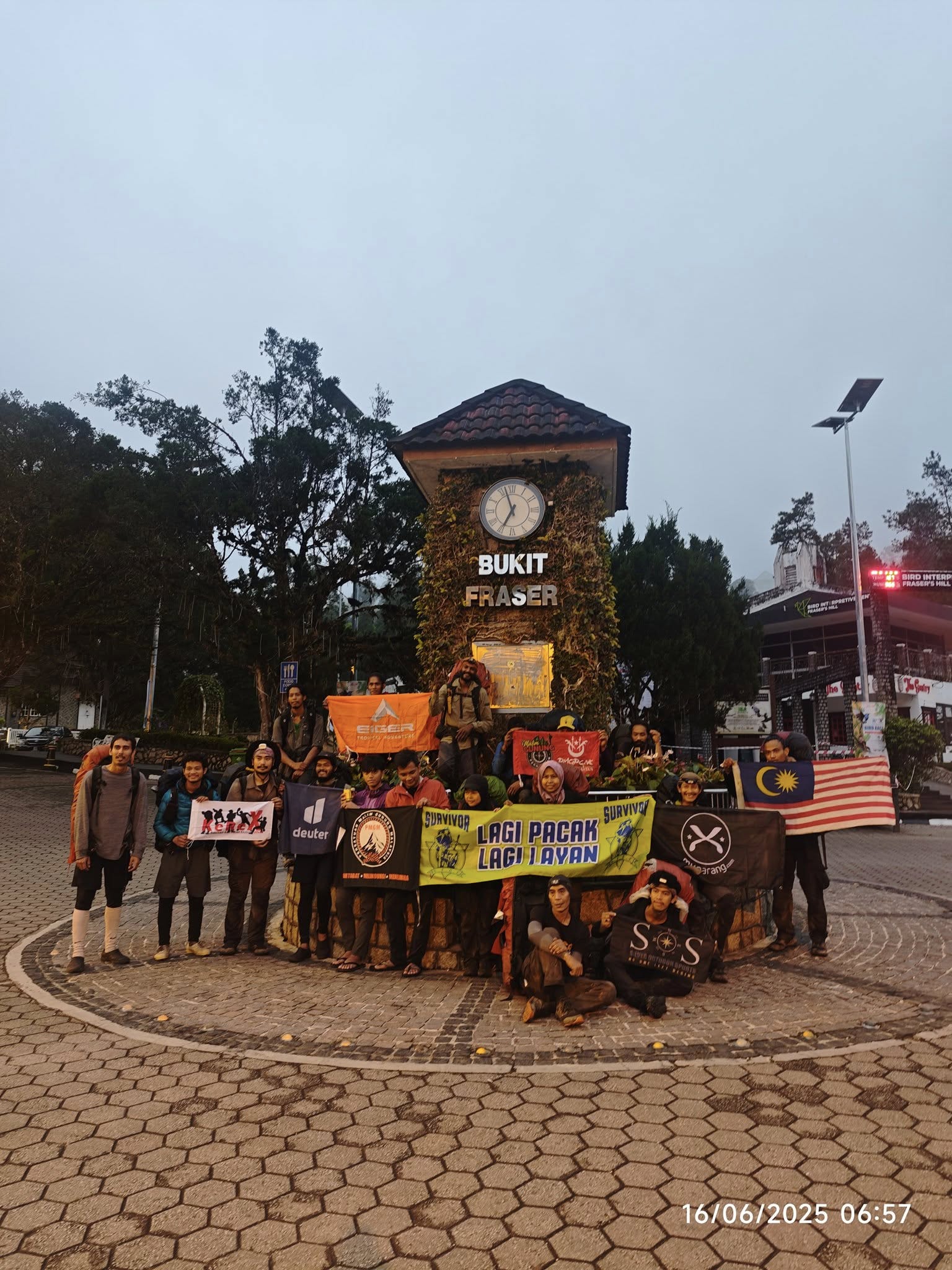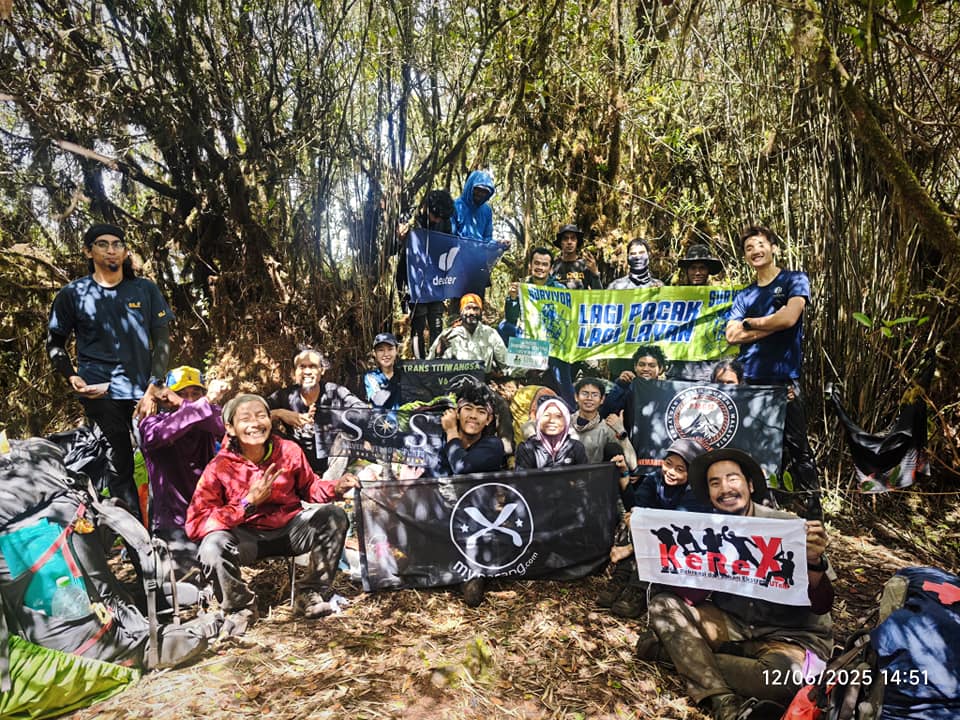
The 6 most epic wilderness trails in Southeast Asia, organized from least to most difficult, based on terrain, remoteness, technicality, and historical expedition data:
Trans Titiwangsa V6 Expedition Malaysia
1. Pan-Philippine Trail (Cordillera Great Traverse) Philippines
- Location: Cordillera Mountain Range, Northern Luzon, Philippines
- Distance: ~400+ km
- Duration: ~25–35 days
- Difficulty: Moderate to Hard
- Short Description:
The Cordillera Traverse, also known as the Pan-Philippine Trail or Luzon Grand Traverse, is the longest and most challenging mountain trail in the Philippines, stretching over 400 km across the rugged Cordillera mountain range in Northern Luzon. This epic trail cuts through remote tribal lands, crosses countless peaks and ridgelines, and passes through five major forest types: lowland dipterocarp, pine forest, montane, mossy (cloud), and alpine grassland.
While shorter guided treks (3–6 days) are common, the full traverse remains a niche expedition, mostly attempted by elite eco-adventurers, conservationists, or dedicated expedition teams.
2. Cardamom Mountains Full Traverse Cambodia
- Location: Southwestern Cambodia
- Distance: ~150–200 km
- Duration: ~12–20 days
- Difficulty: Hard
Short Description:
The Cardamom Mountains full traverse is one of Southeast Asia’s last great jungle expeditions—cutting through Cambodia’s largest intact lowland rainforest. This route weaves across remote ridges, peat-swamp valleys, towering waterfall canyons, and endangered wildlife corridors. Expect long days of trekking with no infrastructure, wide river crossings, leech-infested trails, and bush navigation. Untouched landscapes and rare wildlife, including elusive pileated gibbons and wild elephants, await the bold.
- Completed by: Foreign and local conservationists, bushcrafters, and ultra trekkers; full traverses remain rare.
3. Leuser Range Traverse Indonesia
- Location: Gunung Leuser National Park, Aceh, Indonesia
- Distance: ~100–120 km (depends on route)
- Duration: 10–14 days
- Difficulty: Very Hard
Short Description:
The Leuser Range Traverse is one of Indonesia’s wildest and longest continuous jungle treks, crossing dense tropical rainforest, steep mossy ridges, deep river valleys, and remote summits in the Leuser Ecosystem, one of the world’s richest biodiversity zones. Hikers may encounter wild elephants, orangutans, leeches, and intense rain, making this a true test of endurance and survival.
It’s a pure jungle expedition with no technical climbing, but extremely demanding due to long days of hiking, remoteness, limited trails, and complete self-sufficiency.
Completed by Indonesian military, local adventure groups, and international jungle explorers.
4. Trans Titiwangsa V6 Expedition Malaysia
- Location: Peninsular Malaysia (from Kelantan to Frasers Hill Pahang)
- Distance: 400+ km
- Duration: ~65 days
- Difficulty: Very Hard
- Short Description:
The longest continuous jungle ridge traverse in Malaysia, linking all major Titiwangsa peaks through dense forest, leech-infested valleys, and remote plateaus. Requires exceptional endurance, logistics, and resilience.
A true rite of passage for Malaysian adventurers, this colossal traverse threads the spine of Peninsular Malaysia Titiwangsa range from Mount Basor Kelantan to Frasers Hill Pahang — across every major peak, Titiwangsa range. Expect leech storms, rivers, and endless mud in ancient rainforests. It’s not just a trail — it’s a marathon of mental and physical strength, a communion with the wild soul of the peninsula. If you seek to test your limits and join an elite few, this is Malaysia’s ultimate jungle odyssey.
Completed by: A team of Malaysian hikers safely completed the entire route for 65 days on foot, marking a historic feat in national outdoor adventure. This newly confirmed achievement identifies Trans‑Titiwangsa V6 as the ultimate ultra‑endurance jungle expedition in Malaysia, combining distance, duration, elevation, and technical challenge on a single continuous trail.
5. Baliem Valley to Carstensz Pyramid Indonesia
- Location: Papua, Indonesia
- Distance: ~100–120 km trekking, plus technical summit
- Duration: 12–18 days
- Difficulty: Extreme
- Short Description:
Starts with a remote jungle hike through the culturally rich Baliem Valley, ending with a technical rock-and-rope climb to Oceania’s highest peak (4,884 m). Requires mountaineering skills and glacier navigation.
This is the longest and toughest continuous trekking route in Indonesia that leads through Papua’s dense jungles, deep valleys, high-altitude swamps, and sharp limestone ridges to reach Carstensz Pyramid (4,884m)—the highest mountain in Oceania and the only true alpine peak in Southeast Asia.
Starting from the Baliem Valley or Sugapa, trekkers cross remote tribal lands, endure torrential rain, cold nights, and logistical extremes, before reaching the base camp at ~4,200m and climbing the vertical limestone summit via fixed ropes.
Completed by: Many 7 Summits climbers and adventure operators; logistics via helicopter or full trek.
6. Hkakabo Razi Expedition Myanmar
- Location: Northern Kachin State, Myanmar
- Distance: ~240 km jungle trek + alpine climb
- Duration: ~3–4 weeks jungle + 1 week summit push
- Difficulty: Extreme+ (Unmatched in SE Asia)
- Short Description:
Begins with a month-long approach through the most untouched jungles in Southeast Asia, followed by a dangerous alpine climb to the region’s highest peak (5,881 m). Deadly weather, remoteness, and technical difficulty define it.The Hkakabo Razi route is arguably the hardest continuous trail in Southeast Asia, combining weeks of dense jungle slog with one of the most technical and deadly alpine climbs in the region. Reaching the summit is still a rare, elite frontier achievement.
Completed by:- 1996: First summit by Takeshi Ozaki & Nyima Gyaltsen
- 2014: Myanmar team reached the summit, but descent claimed one life
- 2014–15: National Geographic/North Face team turned back at ~5,742 m
By Khafiz Al Kicok
ZEROTO8000

